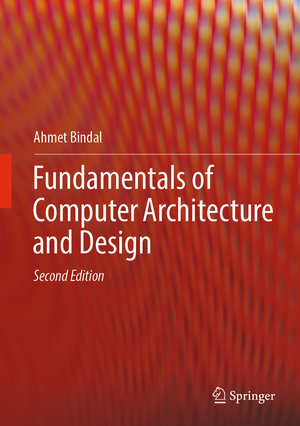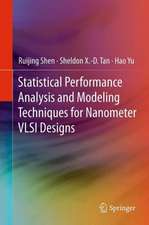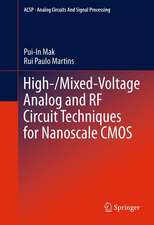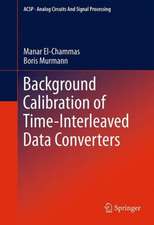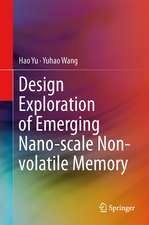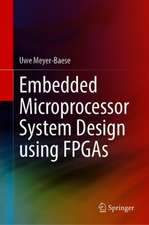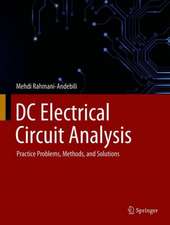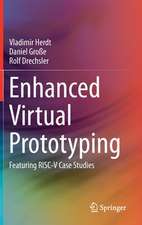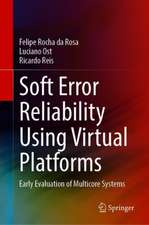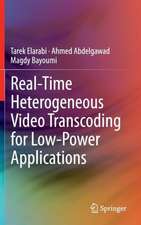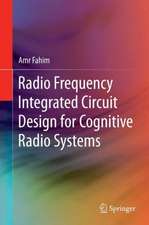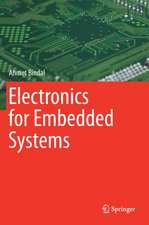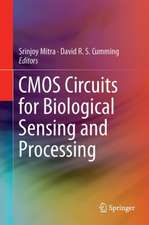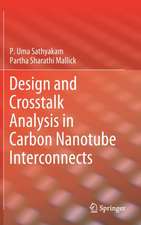Fundamentals of Computer Architecture and Design
Autor Ahmet Bindalen Limba Engleză Hardback – 18 feb 2019
It is based on the author’s decades of industrial experience with computer architecture and design, as well as with teaching students focused on pursuing careers in computer engineering. Unlike a number of existing textbooks for this course, this one focuses not only on CPU architecture, but also covers in great detail in system buses, peripherals and memories.
This book teaches every element in a computing system in two steps. First, it introduces the functionality of each topic (and subtopics) and then goes into “from-scratch design” of a particular digital block from its architectural specifications using timing diagrams. The author describes how the data-path of a certain dig
ital block is generated using timing diagrams, a method which most textbooks do not cover, but is valuable in actual practice. In the end, the user is ready to use both the design methodology and the basic computing building blocks presented in the book to be able to produce industrial-strength designs.Preț: 553.33 lei
Nou
Puncte Express: 830
Preț estimativ în valută:
105.88€ • 110.55$ • 87.63£
105.88€ • 110.55$ • 87.63£
Carte disponibilă
Livrare economică 15-29 martie
Livrare express 01-07 martie pentru 70.63 lei
Preluare comenzi: 021 569.72.76
Specificații
ISBN-13: 9783030002220
ISBN-10: 3030002225
Pagini: 530
Ilustrații: XIV, 592 p. 813 illus., 1 illus. in color.
Dimensiuni: 178 x 254 x 43 mm
Greutate: 1.26 kg
Ediția:2nd ed. 2019
Editura: Springer International Publishing
Colecția Springer
Locul publicării:Cham, Switzerland
ISBN-10: 3030002225
Pagini: 530
Ilustrații: XIV, 592 p. 813 illus., 1 illus. in color.
Dimensiuni: 178 x 254 x 43 mm
Greutate: 1.26 kg
Ediția:2nd ed. 2019
Editura: Springer International Publishing
Colecția Springer
Locul publicării:Cham, Switzerland
Cuprins
Review Of Combinational Circuits.- Review Of Sequential Circuits.- Review Of Asynchronous Circuits.- System Bus.- Memory Circuits And Systems.- Central Processing Unit.- System Peripherals.- Special Topics.- Appendix.
Recenzii
“This book can be part of computer engineering and electrical engineering graduate coursework and can be a reference book for engineers. It takes a bottom-up approach in which the author has covered basic principles before going into the breadth and depth of complex topics. It can broadly be divided in three sections: logic design, I/O, and central processing unit (CPU) design.” (Krishna Nagar, Computing Reviews , January, 25 , 2018)
Notă biografică
Ahmet Bindal received his M.S. and Ph.D. degrees in Electrical Engineering Department from the University of California, Los Angeles CA. His doctoral research was the material characterization for high electron mobility GaAs transistors. During his graduate program, he was a graduate research associate and technical consultant for Hughes Aircraft Co. In 1988, he joined the technical staff of IBM Research and Development Center in Fishkill, NY, where he worked as a device design and characterization engineer. He developed asymmetrical MOS transistors and ultra thin Silicon-On-Insulator (SOI) technologies for IBM. In 1993, he transferred to IBM in Rochester, MN, as a senior circuit design engineer to work on the floating-point unit for AS-400 main frame processor. He continued his circuit design career at Intel Corporation in Santa Clara, CA, where he designed 16-bit packed multipliers and adders for the MMX unit for Pentium II processors. In 1996, he joined Philips Semiconductorsin Sunnyvale, CA, where he was involved in the designs of instruction/data caches and various SRAM modules for the Trimedia processor. His involvement with VLSI architecture started in Philips Semiconductors and led to the design of the Video-Out and Image Co-Processor units for the same processor. In 1998, he joined Cadence Design Systems as a VLSI architect and directed a team of engineers to design self-timed asynchronous processors. Staring 2000 he implemented 802.11a and 802.11b wireless LAN protocols in VLSI. After approximately 20 years of industry work, he joined the Computer Engineering faculty at San Jose State University in 2002. His current research interests range from Nano-Scale Electron Devices to VLSI Design and Nano-Scale Architectures. Dr. Bindal has over 20 scientific journal and conference publications and 10 invention disclosures with IBM; he currently holds 3 U.S. patents with IBM and 1 with Intel Corporation.
Textul de pe ultima copertă
This textbook provides semester-length coverage of computer architecture and design, providing a strong foundation for students to understand modern computer system architecture and to apply these insights and principles to future computer designs. It is based on the author’s decades of industrial experience with computer architecture and design, as well as with teaching students focused on pursuing careers in computer engineering. Unlike a number of existing textbooks for this course, this one focuses not only on CPU architecture, but also covers in great detail in system buses, peripherals and memories.This book teaches every element in a computing system in two steps. First, it introduces the functionality of each topic (and subtopics) and then goes into “from-scratch design” of a particular digital block from its architectural specifications using timing diagrams. The author describes how the data-path of a certain digital block is generated using timin
g diagrams, a method which most textbooks do not cover, but is valuable in actual practice. In the end, the user is ready to use both the design methodology and the basic computing building blocks presented in the book to be able to produce industrial-strength designs.• Provides semester-length textbook for students in computer and electrical engineering, covering the design of complex computing blocks from archite
ctural specifications;• Focuses not only on CPU architecture, but also covers in detail system buses, peripherals and memories;
• Presented in a manner catering to young engineering minds, this textbook minimizes text, while using a systematic design approach with architectural schematics, timing diagrams and control circuits;
• Includes extensive exercises and projects at the end of each chapter;
• Solutions to review problems and PowerPoint slides for instructors available.
Caracteristici
Provides semester-length textbook for students in computer and electrical engineering, covering the design of complex computing blocks from architectural specifications Focuses not only on CPU architecture, but also covers in detail system buses, peripherals and memories Presented in a manner catering to young engineering minds, this textbook minimizes text, while using a systematic design approach with architectural schematics, timing diagrams and control circuits Includes extensive exercises and projects at the end of each chapter Solutions to review problems and PowerPoint slides for instructors available Request lecturer material: sn.pub/lecturer-material
